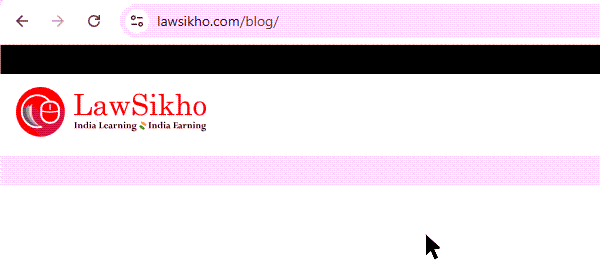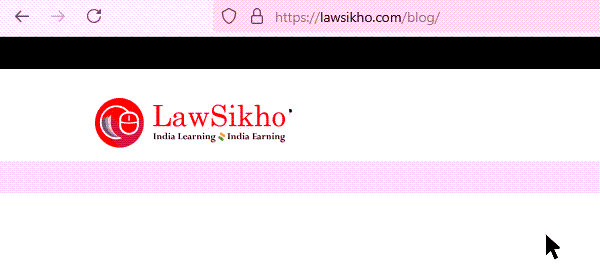Learn how to draft a complete section 134 board report using AI in just 3 prompts. This practical guide shows how to use Claude or ChatGPT with structured uploads to automate the preparation of a board report while ensuring full legal compliance under the Companies Act 2013.
Table of Contents
Overview of the series: How to prepare a board report under section 134 using AI
We have finally reached the final stage of our article series on how to use AI to prepare board reports under section 134 of the Companies Act.
Throughout this series, we created a scenario where junior lawyer Arjun and senior partner Ms. Rao worked together to prepare a board report. To teach Ms. Rao (and you) how to use AI for board reports, we followed a simple approach:
First, we tested if Claude understands what a board report means.
Second, we asked Claude to create a list of mandatory disclosures under section 134 and Rule 8 of the Companies (Accounts) Rules, 2014.
Third, once we had the complete list, we asked Claude to create 6 groups so Arjun could teach Ms. Rao and you to create board reports step by step.
Our approach was simple:
- Upload documents about Nova AgriTech
- Check Claude’s understanding of the information
- Ask it to draft a part of the board report
- Review everything (which we called “Human Review”)
Now in this final part, I am going to show you how you can create an entire board report with just 2-3 prompts. For this, we will use the document that contains categorisation of the mandatory disclosure into 6 groups (which Claude arranged logically) and all the Nova AgriTech information documents.
You can find the link to the entire series at the end of the article.
Focus: AI-powered efficiency in section 134 board report drafting
In this article, Arjun and Ms. Rao show how to create board reports the fastest way. They will build Nova’s complete board report using a practical method that works in real life.
By the end, you will learn:
- How to turn the step-by-step method into a smooth workflow
- A simple 3-prompt technique to create a complete board report
- How much time does each method take—traditional vs step-by-step vs efficient
- How you can use this approach in your own work
The challenge: Create a board report with three prompts
Friday morning, 9:30 AM. Ms. Rao’s phone rang again—Amit Verma called back.
“Ms. Rao, we have an emergency. The board meeting has been moved to today’s evening, and we need the board report by this afternoon. Can you help?”
Ms. Rao checked her schedule for the day. Less than a few hours to finalise everything.
“Let me call you back in ten minutes,” she said, hanging up.
She turned to Arjun, who was organising the Nova files. “Perfect timing for our efficiency test.”
“What do you mean?” Arjun asked.
“We spent the whole day yesterday learning how AI handles different types of board report content. Now let us see if we can deliver a complete board report in real-time.”
She pulled up their Nova AgriTech files. “We have all our context documents ready. All six groups were mapped. What if we upload everything at once and create the complete board report with just a few prompts?”
Arjun’s eyes lit up. “You mean skip the step-by-step approach and go straight to the final output?”
“Exactly. Show me how fast our methodology can work when we need it to.”
The complete context upload strategy
“The six-group breakdown taught us how AI thinks about board reports,” Arjun explained, opening a fresh Claude conversation. “Now we give it everything upfront.”
He began uploading the documents they had created throughout the day before:
Document 1: Nova AgriTech comprehensive company profile
- Business details, board composition, key developments
Document 2: Financial summary document
- Three-year financial progression, strategic investments
Document 3: Group 3 governance document
- Directors’ responsibility context, board evaluation methods
- Internal control systems and compliance procedures
Document 4: External stakeholder context
- Auditor relationship status, regulatory compliance history
- Related party transactions and section 186 investments
Document 5: Risk and impact philosophy document
- Management’s approach to risk communication
- CSR integration strategy and operational excellence metrics
Document 6: Legal compliance document
- Regulatory compliance status, subsidiary performance
- Cross-reference data points for consistency verification
Important note for readers: Uploading six comprehensive documents at once requires a paid subscription to Claude Pro or ChatGPT Plus. Free versions have upload limits that will not handle this volume of documents simultaneously.
If you are using free versions, you have two options:
- Combine documents: Merge all six documents into one comprehensive file before uploading
- Sequential upload: Upload documents one by one, referring back to previous uploads in your prompts
“The subscription cost pays for itself quickly,” Ms. Rao noted. “When you can create a complete board report in a few minutes instead of days, the efficiency gains justify the expense immediately.”
The three-prompt approach
With all documents uploaded, Arjun crafted the first prompt. His hands moved confidently across the keyboard.
Prompt 1: Complete board report generation
“Based on all Nova AgriTech documents uploaded, draft their complete FY 2024-25 board report under Section 134(3) and Rule 8 of the Companies (Accounts) Rules, 2014.
The document containing mandatory disclosure in 6 group is attached.
Write in professional board report language suitable for Nova’s institutional investors and regulatory filing.
Ensure complete legal compliance while maintaining strategic business communication quality throughout.”
Click here to see the response and here to see the complete conversation.
Time elapsed: 2 minutes
Claude’s response appeared rapidly.
A complete, structured board report spanning 7 pages with professional formatting.
“Look at this,” Ms. Rao said, scrolling through the comprehensive output.
“Complete financial highlights table, state of company’s affairs, amounts carried to reserves, dividend recommendation, board meetings with all seven dates listed, directors’ appointments with exact dates.”
“Every section 134(3) requirement covered,” Arjun noted, reading through the sections.
“All Rule 8 disclosures included. Look – it’s got the Directors’ Responsibility Statement with all six mandatory points (a) through (f), auditor qualification response, section 186 investments, related party transactions.”
“I really like the structure,” said Ms. Rao.
“It starts with financial highlights, then moves through board composition, directors’ responsibility statement, statutory compliance, risk management, CSR, and ends with subsidiary performance. It is pulling from all six context documents simultaneously.”
“Did you notice the professional language?” Arjun asked, pointing to specific sections.
“The auditor qualification response is diplomatic: ‘Management Response: Contract terms justify upfront recognition based on committed government partnership structure.’ That is exactly the tone we need.”
“The financial section shows our 42% growth story beautifully, complete with a comparison table. The CSR section positions initiatives as business strategy: ‘Farmer Training Programs: 1,200+ professionals trained, supporting market expansion.’ It’s integrating everything we taught it.”
Prompt 2: Strategic enhancement
Ms. Rao reviewed the output with her practiced eye.
“Legally compliant and comprehensive. But let us enhance it for institutional investor sophistication.”
Arjun typed the enhancement prompt:
“Enhance the board report to elevate strategic positioning for institutional investors while maintaining complete legal compliance.
Focus on:
- Transform compliance disclosures into competitive advantage narratives
- Position governance developments as strategic business enablers
- Frame financial performance within a market leadership context
- Demonstrate management sophistication through risk and CSR integration
- Maintain professional confidence throughout all disclosures
Keep all mandatory legal language intact while upgrading business communication quality to investment-grade standards.”
(Click here to see the response and here to see the complete conversation.)
Time elapsed: 5 minutes total
The enhanced version was as good as the previous one.
Claude had completely elevated the strategic positioning while maintaining every legal requirement.
“I knew it could do it,” Ms. Rao said, reading through the refined version.
“Look at this opening – it now has an ‘Executive Summary: Strategic Value Creation’ section that was not there before. Listen to this: ‘Nova AgriTech has delivered a transformational performance in FY 2024-25, significantly outpacing market growth while establishing dominant competitive positioning in India’s precision agriculture sector.'”
“The financial table is now called ‘Strategic Financial Excellence’ and includes a ‘Strategic Impact’ column,” Arjun observed.
“42% revenue growth becomes ‘3.5x market growth rate.’ Net profit becomes ‘Operational leverage demonstration.’ Even the margin expansion becomes ‘Pricing power validation.'”
Ms. Rao continued scrolling with growing excitement.
“The language transformation is remarkable. The auditor qualification response went from diplomatic to strategic positioning: ‘Professional Audit Discussion: Revenue recognition timing on our landmark Haryana Agricultural Department contract demonstrates sophisticated accounting treatment and proactive auditor engagement.'”
“And look at the CSR section,” Arjun added.
“It is now titled ‘Corporate Social Responsibility: Strategic Business Integration’ and describes farmer training as ‘Market expansion strategy disguised as social responsibility.’ That’s exactly the sophisticated investor language we wanted.”
“The risk section is brilliant,” Ms. Rao noted.
“‘Risk Transformation: Competitive Advantage Development’ – it positions every risk as an opportunity. Technology obsolescence becomes ‘Technology Evolution Leadership.’ Climate variability becomes ‘Climate Solution Leadership.'”
“Notice how it maintained every mandatory legal requirement while upgrading the strategic communication,” Arjun observed.
“Section 134(5) directors’ responsibility language is exactly correct, but now it’s titled ‘Directors’ Responsibility Statement: Operational Excellence Commitment’ and references Nova’s specific circumstances throughout.”
Prompt 3: Final compliance verification
“One final check,” Ms. Rao said.
“Let us verify everything is bulletproof.”
Arjun crafted the verification prompt:
“Review the complete board report for final compliance verification and consistency.
Verify:
- Every Section 134(3)(a) through (p) requirement is covered
- All Rule 8(5) disclosures are included where applicable
- Cross-reference accuracy: board meeting counts, financial figures, director appointment dates
- Mandatory language compliance for directors’ responsibility statement
- Professional tone consistency throughout all sections
- Strategic narrative coherence from governance through compliance sections
Provide a compliance checklist confirming all requirements are met, and make any necessary corrections.”
(Click here to see the response and here to see the complete conversation.)
Time elapsed: 8 minutes total
Claude provided both a corrected final version and a comprehensive compliance checklist – but surprisingly, the document remained virtually identical to the enhanced version.
“Interesting,” Ms. Rao said, comparing the verification output to the previous version.
“Claude kept almost everything exactly the same. That tells us the strategic enhancement has already achieved full compliance.”
“Look at this consistency,” Arjun observed, checking the cross-references.
“Seven board meetings were mentioned consistently across all sections. The ₹45.2 crores revenue figure is used accurately throughout. Director appointment dates aligned perfectly – Dr. Priya Sharma in July 2024, Mr. Rajesh Kumar in September 2024.”
“The Directors’ Responsibility Statement maintains the section 134(5) mandatory language with Nova’s specific details,” Ms. Rao noted.
“Points (a) through (f) are all there with the required statutory wording, but customized with Nova’s 18-month cash runway, 23 regulations tracked, and CFO-certified controls.”
“What this shows,” Arjun added, “is that Claude’s strategic enhancement in the second prompt did not sacrifice legal compliance for sophistication. It achieved both simultaneously.”
Ms. Rao reviewed the final document structure.
“Nine pages of investment-grade board report content that meets every legal requirement while positioning Nova as a market leader. From ‘Executive Summary: Strategic Value Creation’ through ‘Forward Strategic Positioning’ – it tells a compelling growth story within the compliance framework.”
Results analysis
Ms. Rao leaned back in her chair, reviewing their work.
Time comparison:
- Traditional approach: 2-3 days for a comprehensive board report
- Six-group methodology: 1-2 hours, including collecting and preparing documents for uploading
- Efficiency approach: 8 minutes of prompting, 30 minutes of review (exclusive of time spent on collection of company information that could be uploaded to AI)
Quality assessment:
- Legal compliance: Complete coverage of all statutory requirements
- Professional standards: Investment-grade communication quality
- Strategic positioning: Sophisticated business narrative integration
- Factual accuracy: Verified and cross-referenced throughout
“Isn’t this remarkable?” she asked Arjun, who was formatting the final board report draft.
“We have created a professional board report that meets every legal requirement while telling Nova’s strategic story effectively.”
“The key insight,” Arjun added, “is that learning the six-group methodology taught us how to create better context documents. Now AI can produce sophisticated output because it understands the complete business picture.”
How AI transformed the board report preparation process
“Amit? Ms. Rao here. Yes, we can absolutely help with your board report. We have your complete board report ready. I will email it to you within the next ten minutes.”
She could hear the relief in Amit’s voice.
“That is incredible! How did you manage it so quickly?”
“We have developed a more efficient methodology,” she replied diplomatically.
After hanging up, she turned to Arjun.
“When Amit called in the morning, I was skeptical whether we could deliver by this afternoon. Ten minutes ago, I was confident we could handle any urgent timeline.”
“What changed your mind?” Arjun asked although he knew the answer.
“The efficiency demonstration. When Amit called this morning, my first instinct was to negotiate for more time. Today, I realised we could deliver faster than any traditional approach while maintaining quality standards.”
She gestured toward the completed board report.
“Eight minutes of actual prompting. This is not just about speed – it is about fundamentally rethinking how we practice corporate law.”
“The morning deadline became an opportunity instead of a crisis,” Arjun observed.
Ms. Rao gathered the Nova files thoughtfully.
“Six months ago, urgent board report requests meant turning clients down or delivering rushed work. Today, I am confident we can handle emergency timelines without compromising quality.”
“Instead of spending weeks on routine compliance documentation, we can focus on strategic legal advice that truly adds value for clients.”
“And most importantly,” she added with a slight smile, “confidence to take Friday afternoon calls from panicked clients without dreading the weekend ahead.”
Key takeaways from the AI-based board report
Through this eight-part series, I am sure you must have discovered:
- How AI thinks about legal content: Different types of board report sections require different communication strategies. Governance facts need credibility building. Financial performance needs strategic positioning. Directors’ statements need liability protection. External disclosures need diplomatic relationship management.
- Document-based context strategy: Comprehensive context documents enable sophisticated AI analysis. Instead of explaining everything in prompts, upload structured business intelligence that AI can reference throughout the drafting process.
- Progressive complexity building: Start with simple requirements, build understanding systematically, then apply efficiency techniques. Learning the methodology enables better real-world implementation.
- Human oversight remains essential: AI handles organisation, structure, and consistent language. Lawyers provide strategic judgment, legal accuracy verification, and professional quality standards.
How you can start using AI for board report drafting
- Start simple: Choose a straightforward board report project. Create basic context documents. Use the three-prompt structure. Build confidence with the methodology.
- Use our templates: Download the context document frameworks from this series. Adapt them to your specific clients and practice areas. Build your own systematic approach.
- Scale gradually: Begin with private company board reports. Progress to public company disclosures. Expand to other compliance documents using the same principles.
- Share the methodology: Train other lawyers in your firm. Develop standardised context document templates. Create efficient workflows that maintain professional quality.
Prompt library for board reports
Here are 5 different prompt approaches you can use, depending on your needs and AI tool:
Prompt 1: The complete generation approach (What we used)
Best for: When you have comprehensive company documents and want a full board report
Upload: All company documents (financial statements, governance records, compliance status, etc.)
Prompt:
Based on all [Company Name] documents uploaded, draft their complete FY [Year] board report under Section 134(3) and Rule 8 of the Companies (Accounts) Rules, 2014. Write in professional board report language suitable for [Company Name]’s institutional investors and regulatory filings. Ensure complete legal compliance while maintaining strategic business communication quality throughout.
Prompt 2: The section-by-section approach
Best for: When you want more control over each section or have limited upload capacity
Upload: Company profile document
Prompt:
Draft the [specific section, e.g., “financial performance and capital management”] section of [Company Name]’s FY [Year] board report. Cover Section 134(3)[relevant subsections] and Rule 8(5)[relevant numbers]. Use the company information uploaded to customize all disclosures. Write for institutional investors while ensuring legal compliance.
Repeat for each section you need
Prompt 3: The template creation approach
Best for: Law firms that want reusable templates for multiple clients
Upload: Generic board report requirements document
Prompt:
Create a comprehensive board report template under Section 134(3) of the Companies Act 2013 and Rule 8 of the Companies (Accounts) 2014 that can be customized for private companies.
Write in professional language suitable for institutional investors. Include guidance notes for each section.
Prompt 4: The enhancement-only approach
Best for: When you already have a basic board report draft that needs improvement
Upload: Your existing board report draft
Prompt:
Review and enhance this board report draft to elevate it for institutional investor sophistication. Transform compliance disclosures into competitive advantage narratives, improve strategic positioning, and upgrade the language to investment-grade standards. Maintain all legal requirements while making it more compelling for stakeholders.
Prompt 5: The compliance check approach
Best for: Final review of completed board reports
Upload: Your completed board report
Prompt:
Review this board report for complete legal compliance under Section 134(3) and Rule 8. Verify:
1. All mandatory disclosures are covered
2. Cross-reference accuracy (numbers, dates, names)
3. Proper statutory language is used
4. Professional tone consistency
5. Strategic narrative coherence
Provide a detailed compliance checklist and fix any issues found.
Tips for using these prompts effectively:
- Context is king: Always upload comprehensive company information. The better Claude understands your business, the better the output.
- Be specific: Replace [Company Name], [Year], and [specific sections] with actual details.
- Iterate: Do not expect perfection on the first try. Use follow-up prompts to refine specific sections.
- Verify: Always review the final output, especially for liability-sensitive sections like Directors’ Responsibility Statements.
- Adapt: Modify these prompts based on your company’s specific needs, size, and complexity.
Complete article series
- Part 1: Getting started
- Part 2: Building the foundation (Group 1)
- Part 3: Financial performance and capital management (Group 2)
- Part 4: Directors’ statements and professional judgment (Group 3)
- Part 5: External stakeholders and audit relations (Group 4)
- Part 6: Risk management and CSR disclosures (Group 5)
- Part 7: Final assembly and compliance verification (Group 6)
- Part 8: Live demonstration – complete board report creation ← You are here
The journey from skepticism to advocacy: Through systematic learning, practical application, and real-world efficiency testing, this series demonstrates how AI tools can enhance legal practice while maintaining professional excellence.
Your AI-powered legal practice starts now. The methodology works. The efficiency gains are real. The quality standards are maintained.
Transform how you practice corporate law, one board report at a time.
FREQUENTLY ASKED QUESTIONS
1. How can AI help draft a board report under Section 134 of the Companies Act?
AI tools like ChatGPT and Claude can generate a legally compliant board report under section 134(3) and Rule 8 of the Companies (Accounts) Rules, 2014, using as few as three prompts. By uploading structured company documents, lawyers can automate the drafting process and produce high-quality, investor-ready reports in minutes, saving days of manual effort.
2. What are the three AI prompts needed to generate a complete board report?
The three prompts are:
(1) Generate the complete board report based on the uploaded company data,
(2) Enhance the report to position it strategically for institutional investors, and
(3) Verify the report for full legal compliance and consistency.
This three-prompt approach ensures legal accuracy, strategic positioning, and professional polish in record time.
3. Is AI-generated board report content compliant with Section 134(3) and Rule 8?
Yes—if used properly. AI can be trained to include all mandatory disclosures under Section 134(3)(a) to (p) and Rule 8(5), including financial highlights, risk management, CSR disclosures, director responsibilities, and more. However, human review remains essential to verify accuracy, legal language, and jurisdictional nuances.
4. What types of documents should I upload to get an accurate board report output from AI?
For best results, upload a set of six structured documents covering company profile, financial data, governance practices, external stakeholders, risk/CSR philosophy, and legal compliance. The richer the input, the more accurate and professional the AI-generated board report will be. Free AI tools may have upload limits, so using a Pro subscription is recommended.
5. Can AI transform compliance documentation into strategic investor communication?
Absolutely. One of AI’s biggest advantages is its ability to transform statutory compliance data into compelling business narratives. For example, it can turn CSR disclosures into strategic market positioning, risk factors into competitive resilience, and audit responses into evidence of governance maturity, making board reports more engaging for investors and regulators alike.






 Allow notifications
Allow notifications
